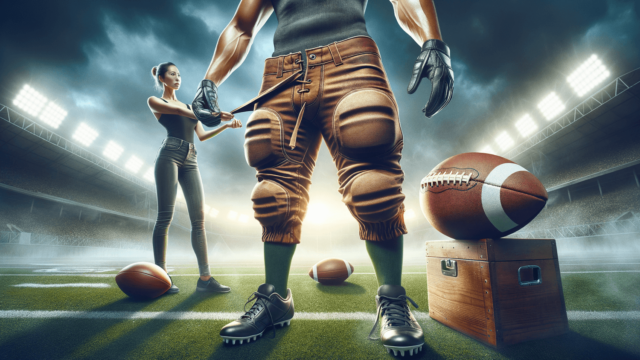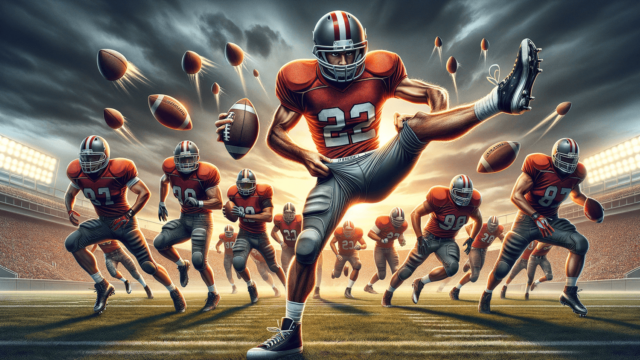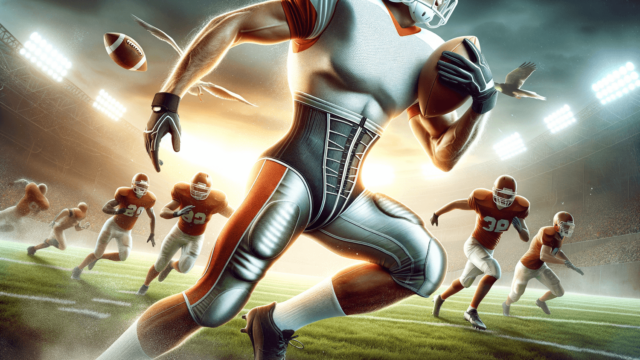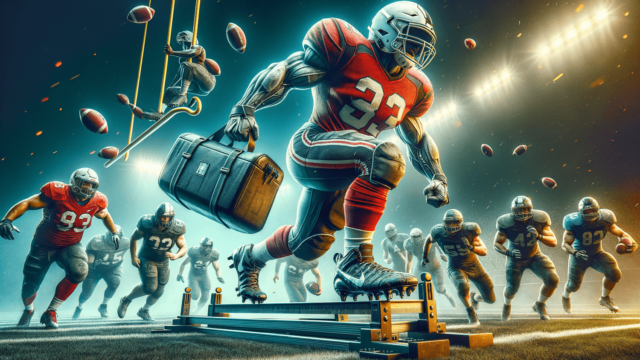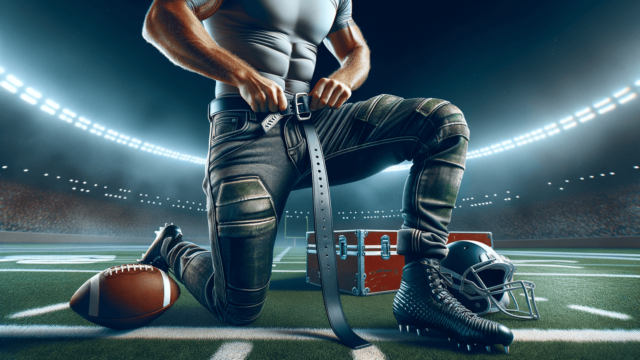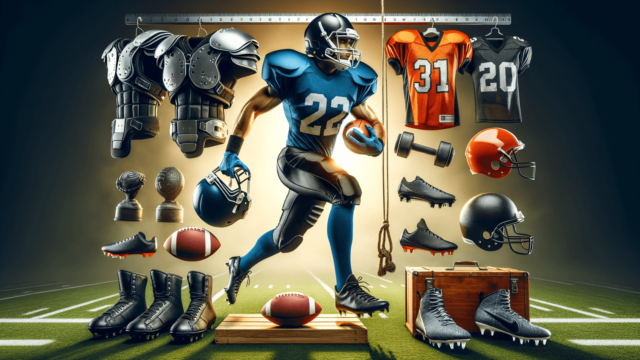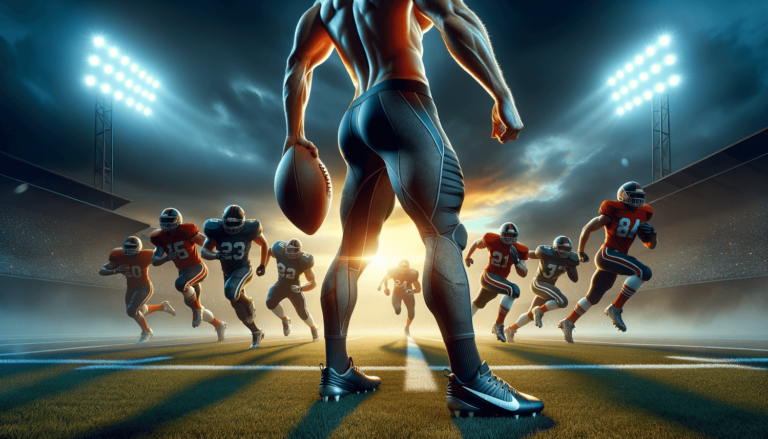
Football pants should fit snugly around the waist and hips, allowing the athlete to move comfortably without excess material bunching up. They should be long enough to cover and hold the necessary pads securely in place, yet not restrict movement or flexibility on the field.
Finding the Right Football Pants Fit
When choosing football pants, it is essential to prioritize a comfortable, snug fit that allows for ease of movement. The perfect football pants should support your game and enhance your performance on the field.
Secure Waistband
A secure waistband fit is crucial for football pants. Look for pants with an adjustable belt or built-in waistband for a personalized and comfortable fit around the waist, ensuring they stay in place during the game.
Proper Hip Fit
The football pants should fit snugly around the hips, allowing the athlete freedom of movement without excess material bunching up. Ensure that the pants do not feel overly restrictive or too tight around the hips when you try them on.
Selecting Pants with Integrated Padding
Many football pants come with built-in padding, which provides additional protection and proper fit for the pads in crucial areas. Here are some factors to consider when investing in football pants with integrated padding.
Thigh and Knee Pads
Football pants must accommodate thigh and knee pads to ensure adequate protection during the game. Look for pants that have enough room in these areas to secure the pads or come with built-in pads that fit into specific pockets.
Proper Length
The pants should be long enough to cover the lower portion of the knee pad while still allowing the athlete to bend and move with ease. This ensures that the pads stay securely in place during gameplay without hindering the player’s movement and flexibility.
Tailoring Football Pants to Your Needs
Should your football pants not fit properly, you can work with a professional tailor to customize them to your specific needs. Keep the following tips in mind:
Custom Waist Adjustments
If the waistband does not perfectly fit, a tailor can take in or let out the waist to provide the snugness needed for secure game-day wear.
Length Alterations
If the pants are too long, a tailor can easily adjust the length to properly cover the pads while maintaining flexibility for the athlete.
Maintaining Your Football Pants
Proper care and maintenance of your football pants is essential to prolong their life and to retain optimal fit and performance. Follow these simple care tips:
Washing Guidelines
Always adhere to the manufacturer’s washing instructions. Generally, football pants can be machine washed in cold water, using a gentle cycle and mild detergent. Avoid using bleach or fabric softeners, as they can damage the integrity of the materials and padding.
Drying
Hang the football pants to air dry or tumble dry on low heat to prevent any shrinkage or deformation in the material. Avoid placing them in direct sunlight or exposing them to high heat, as this can cause damage to the elasticity and overall fit.
Choosing the Right Material
The material of football pants plays a significant role in their fit, performance, and comfort on the field. Opt for materials that provide durability, stretch, and breathability to ensure a comfortable experience during gameplay.
Spandex and Polyester Blends
Football pants made with spandex and polyester blends offer excellent stretch and flexibility without losing their shape. This combination ensures that the pants remain snug and maintain their fit throughout the game.
Nylon
Nylon is a durable and lightweight material that provides increased breathability and comfort. Football pants made of nylon tend to be more resistant to wear and tear, making them a long-lasting option for players.
Sizing Considerations
Finding the right football pants fit relies heavily on accurate sizing. Remember to consider the following aspects:
Manufacturer Sizing Charts
Always consult the manufacturer’s sizing chart when purchasing football pants. Sizing can vary between brands, so it is important to measure your waist, hip, and inseam to ensure the proper fit.
Adjust for Growth
If purchasing football pants for a young athlete, consider the potential for growth throughout the season. Opt for pants with an adjustable waistband to accommodate changes in the athlete’s size without compromising the fit of the pants.
Frequently Asked Questions
After learning about the proper fit for football pants, you might have further queries related to the topic. Here are some common questions and their answers to address the concerns of those looking for the right football pants.
What is the difference between integrated and non-integrated football pants?
Integrated football pants come with built-in padding in crucial areas like the thighs, hips, and knees, providing extra protection. Non-integrated pants do not have built-in padding, so athletes need to wear individual pads, inserting them into designated pockets in the pants or attached to a girdle worn underneath.
Where can I purchase football pants in my size?
You can purchase football pants at most sports equipment retailers, both in-store and online. Make sure to consult the manufacturer’s sizing chart and measure your waist, hip, and inseam to ensure the proper fit. Consider choosing a vendor with an easy return policy, allowing for hassle-free exchanges if needed.
Can I wear my football pants without pads?
While you can technically wear football pants without pads, it is not recommended, as wearing appropriate padding is essential for your safety and protection on the field. Football pants are designed to accommodate pads, so omitting them significantly reduces their effectiveness.
What other essential gear should I wear with football pants?
Besides football pants, you should also wear a helmet with a proper chin strap, shoulder pads, mouthguard, cleats, and a cup for groin protection. Wearing padded girdles and padded compression shirts under your pants and jerseys can provide additional support and protection.
How often should I replace my football pants?
The frequency of replacing football pants depends on their wear and tear. Once they become too stretched, torn, or show signs of damaged padding, it is best to replace them for your safety and optimal performance on the field. Regular inspections and proper maintenance can extend the life of your pants.
Featured Posts
- No pillar pages found.
